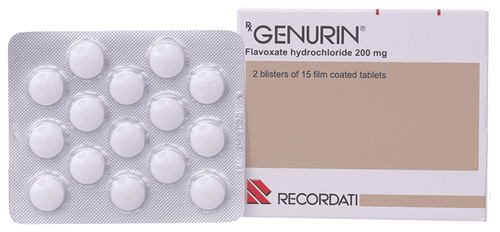This is an automatically translated article.
Curam contains the active ingredient amoxicillin in combination with clavulanic acid and is indicated for the treatment of infections caused by susceptible bacteria in adults and children. Let's learn about dosage and notes when using Curam through the article below.
1. Uses of Curam
1.1. Indications “What is Curam 1000?”. Curam medicine contains the active ingredient is amoxicillin antibiotic combined with clavulanic acid in two strengths: Curam 1000mg (ratio of amoxicillin/clavulanic acid is 875mg/125mg) and Curam 625mg (ratio of amoxicillin/clavulanic acid is 500mg/125mg). Curam belongs to the group of antibiotics indicated in the treatment of the following pathologies:
Exacerbation of chronic bronchitis, acute otitis media; Acute bacterial sinusitis (with confirmed diagnosis); Community-acquired pneumonia; Pyelonephritis, cystitis ; Soft tissue infections and skin infections such as cellulitis, severe tooth abscesses, animal bites...; Bone and joint infections, especially osteomyelitis. 1.2. Pharmacodynamics Amoxicillin belongs to the group of synthetic penicillin antibiotics, acting through inhibition of one or more enzymes at the peptidoglycan biosynthetic pathway in the bacterial cell wall. Inhibition of peptidoglycan synthesis weakens the cell wall, leading to cell lysis and cell death.
Amoxicillin is easily degraded by beta-lactamase enzymes produced by resistant bacteria, so the antibacterial spectrum of amoxicillin alone does not include bacteria that produce this enzyme.
Clavulanic acid belongs to the group of beta-lactams and is structurally related to penicillin. Clavulanic acid helps inactivate certain beta-lactamase enzymes thereby preventing inactivation of the antibiotic amoxicillin. However, clavulanic acid alone has no clinically useful antibacterial activity.
Bacteria are resistant to amoxicillin/clavulanic acid by two main mechanisms:
Inactivation by bacterial beta-lactamases that are not themselves inhibited by clavulanic acid (including groups B, C, D); Modification of the penicillin-binding protein (PBP) thereby reduces the pressure of the antibacterial drug on the target. The drug ejection mechanism or bacterial impermeability can lead to or contribute to bacterial resistance (especially to gram-negative bacteria). 1.3. Pharmacokinetics Absorption: In aqueous solution at physiological pH, Amoxicillin and clavulanic acid completely dissociate. These two components are rapidly absorbed orally (the extent of absorption is optimal when taken at the beginning of a meal). After oral administration, the drug has a bioavailability of about 70%. The plasma data of the two components are similar, the time to peak plasma concentration (Tmax) is about 1 hour. Distribution: Approximately 25% of a dose of clavulanic acid in plasma and 18% of a dose of amoxicillin in plasma is bound to plasma proteins. The apparent volume of distribution (Vd) is about 0.3 to 0.4 l/kg for amoxicillin and about 0.2 l/kg for clavulanic acid. When administered intravenously, both clavulanic acid and amoxicillin are found in abdominal tissue, gallbladder, muscle tissue, fat, peritoneal fluid, synovial fluid, pus, and bile. The drug is not adequately distributed into the cerebrospinal fluid. Scientific studies indicate that amoxicillin is excreted in human milk (similar to other penicillins). Metabolism: Amoxicillin is partially eliminated in the urine as inactive penicllonic acid with concentrations similar to glucose 10-25% of the initial dose. Clavulanic acid is extensively metabolised in humans and is eliminated in feces, urine and as carbon dioxide in exhaled air. Excretion: Amoxicillin is excreted mainly by the kidneys, clavulanic acid is excreted by the kidneys and not by the kidneys. The mean half-life of both active substances was 1 hour and mean total clearance was 25 l/h in healthy subjects. Of which 60-70% of amoxicillin and 40-65% of clavulanic acid are excreted unchanged in the urine within 6 hours after a single dose of 250mg/125mg or 500mg/125mg tablets.
2. Dosage and how to use Curam 625mg and Curam 1000mg
2.1. How to take Curam tablets are taken orally. Tablets should be taken at the beginning of a meal to help minimize gastrointestinal tolerability and optimize absorption of amoxicillin/clavulanic acid. The course of treatment may be initiated by injection according to the product characteristics of the intravenous formulation.
2.2. Dosage The dose of Curam drug depends on the dosage form of Curam 625mg or Curam 1000mg, the causative agent, severity, site of infection, age, weight and condition of the patient. Specifically as follows:
Adults and children > 40kg: Take 1 tablet/time of Curam 625mg x 3 times/day. For children, tablets or other synthetic pharmaceutical formulations in amoxicillin/clavulanic acid combinations such as powder packs or suspensions can be used, especially for children 6 months of age and younger. There are no clinical data on the dosing of Curam in children under 2 years of age, so the recommended dose is 40mg/10mg/kg/day; Elderly: No need to consider dose adjustment when using; Renal impairment: Dosage should be adjusted according to the recommended dose of amoxicillin and no dose adjustment is required in patients with creatinine clearance > 30ml/min; Patients with hepatic impairment : Care should be taken in dosing and monitoring of liver function at regular intervals.
3. Curam 625mg and Curam 1000mg side effects
Some side effects that may be encountered when using Curam antibiotics are as follows:
Very common side effects (≥ 1/10): Diarrhea; Common side effects (≥ 1/100 to <1/10): Candida infection of mucous membranes and skin; nausea; Uncommon side effects (≥1/1,000 to <1/100): Headache, dizziness, vomiting, increased AST and/or ALT, skin rash, urticaria, pruritus; Rare side effects (< 1/10,000): Reversible leukopenia, thrombocytopenia, erythema multiforme; Unknown side effects: Bacterial overgrowth, reversible agranulocytosis, hemolytic anemia, prolongation of bleeding time and prothrombin time, angioedema, anaphylaxis, syndrome-like serum sickness, hypersensitivity vasculitis, reversible hyperactivity, convulsions, meningitis, antibiotic-associated colitis, black hairy tongue, hepatitis, cholestatic jaundice, Stevens-Johnson syndrome, toxic epidermal necrolysis, acute generalized exanthematous pustulosis syndrome, interstitial nephritis, crystalluria.
4. Notes when using drugs
4.1. Contraindications Contraindicated to use Coram in the following cases:
Patients with hypersensitivity to any component of the drug or to any drug of the penicillin group; Patients with a history of severe immediate hypersensitivity reaction (eg, anaphylaxis) to another beta-lactam drug (eg, carbapenem, cephalosporin or monobactam). 4.2. Before treatment with Coram, the patient should be carefully treated for previous hypersensitivity reactions to penicillins, cephalosporins or beta-lactam drugs.
Serious or sometimes fatal hypersensitivity reactions have been reported with the use of the drug in patients treated with penicillin. In which the patient has a history of hypersensitivity to penicillin and the patient has atopic allergy. In the event of an allergic reaction, treatment with amoxicillin/clavulanic acid should be discontinued and a new alternative regimen should be established. In cases where the patient demonstrates an infection caused by bacteria susceptible to amoxicillin, consideration should be given to switching from amoxicillin/clavulanic acid to amoxicillin according to official guidelines. Curam is not suitable for use in patients at high risk for pathogens presumed to be resistant to beta-lactams that are not mediated by beta-lactamases sensitive to clavulanic acid inhibition. The drug should not be used to treat penicillin-resistant S.pneumoniae. In patients with impaired renal function or in patients taking high doses of the drug, convulsions may occur. Avoid use of amoxicillin/clavulanic acid in cases of suspected infectious mononucleosis because of the development of a measles-like rash associated with this condition following administration of amoxicillin antibiotics. Concomitant use of amoxicillin and allopurinol may increase the likelihood of skin allergies. Prolonged use of the drug can lead to an overgrowth of resistant bacteria. Acute generalized exanthematous pustulosis (AGEP) with systemic erythema, fever, and pustules may occur with the use of Curam. In this case, the drug should be discontinued and any form of amoxicillin is contraindicated. Use with caution in patients with symptoms of liver failure. Periodic evaluation of organ system function including liver, kidney and hematopoietic organs should be performed during prolonged drug therapy. Patients with renal impairment need to adjust the dose according to the degree of renal impairment. Patients with decreased urine output, in some very rare cases, crystaluria has been observed (mainly during parenteral therapy). In the case of high-dose amoxicillin therapy, adequate fluid intake and urine output should be maintained to help reduce the likelihood of amoxicillin crystals in urine (intubated patients need to be kept in check. Regular smoothness Ability to drive and use machines: There are no studies that have documented any adverse effects of the drug on the ability to drive or use machines... However, patients may experience side effects such as dizziness, allergic reactions, convulsions... Pregnant women: Animal studies have shown that the drug has no direct or indirect harmful effects on pregnancy or development. The use of the drug in pregnant women does not indicate an increased risk of birth defects. However, use of the drug should be limited in pregnant women. Women who are breast-feeding: The drug is excreted in breast milk, so it can lead to diarrhea, mucosal fungal infections in breastfed infants. treated with the drug Coram.
Please dial HOTLINE for more information or register for an appointment HERE. Download MyVinmec app to make appointments faster and to manage your bookings easily.













